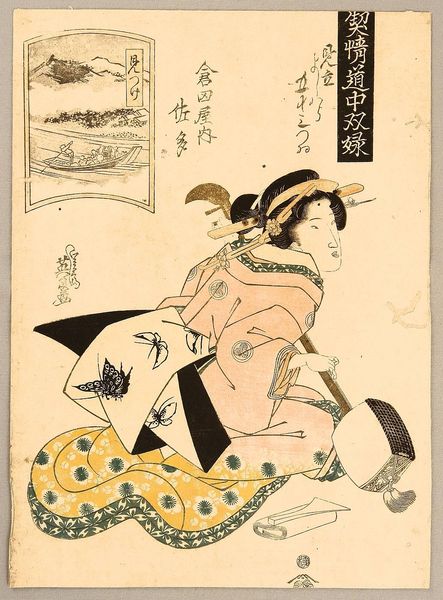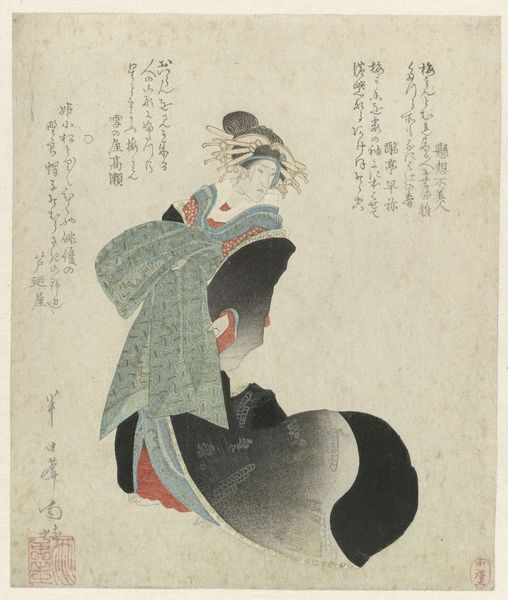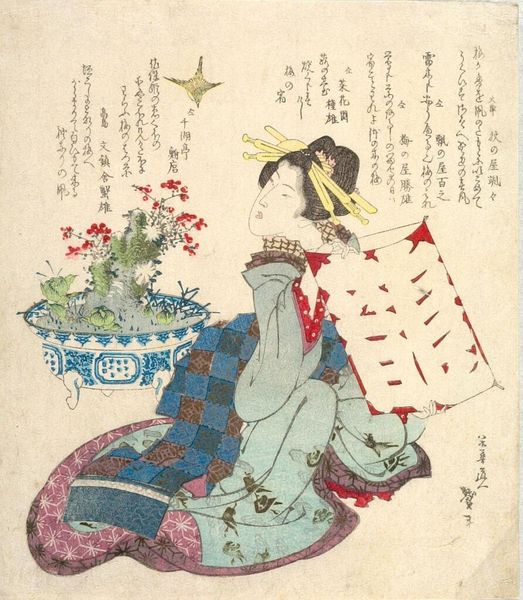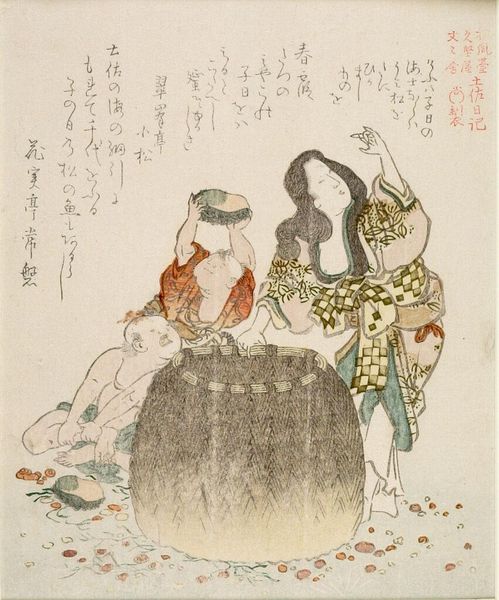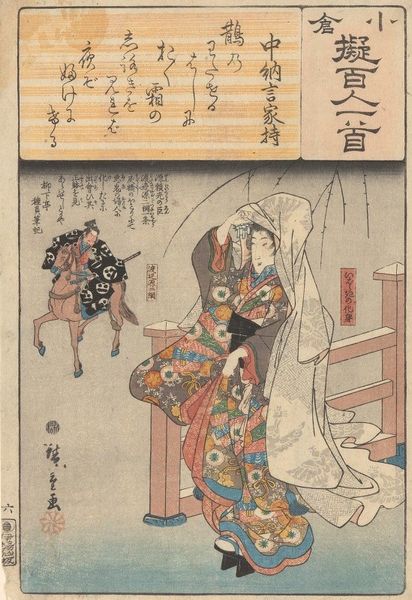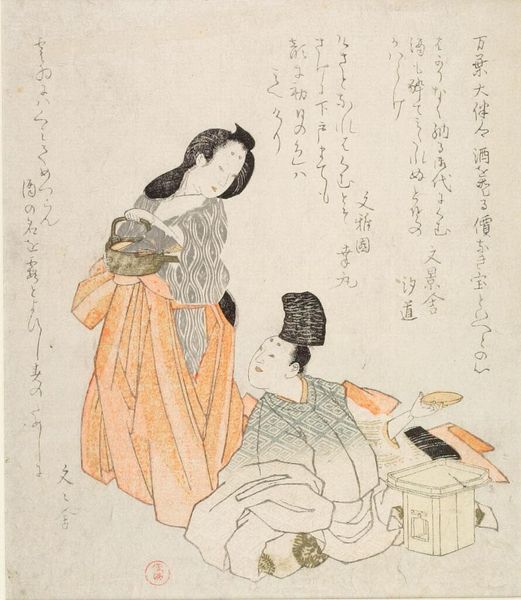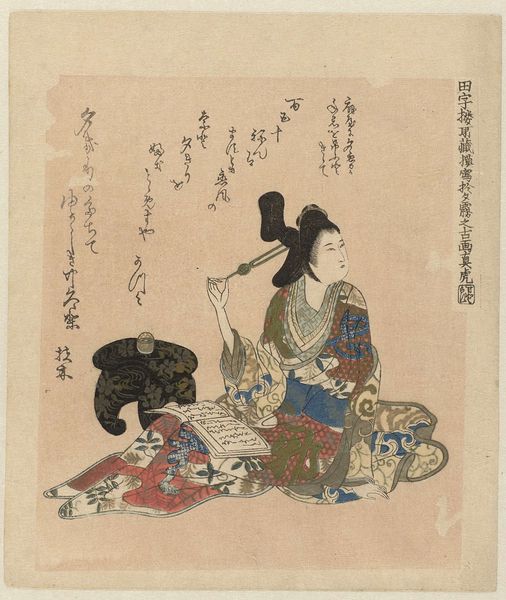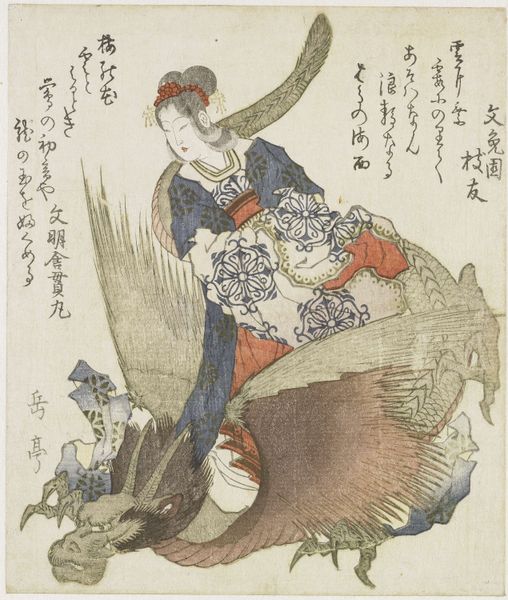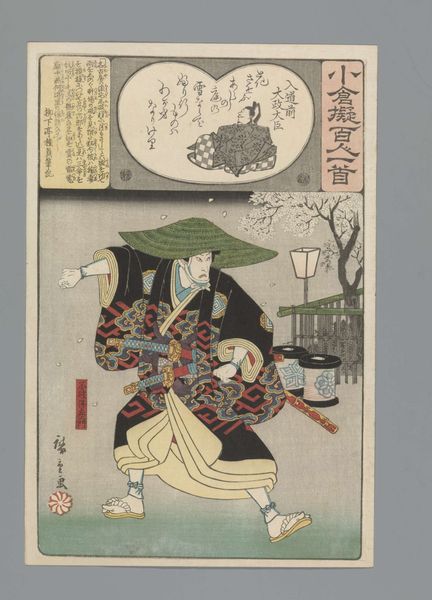
drawing, print, woodblock-print
#
drawing
#
narrative-art
# print
#
asian-art
#
ukiyo-e
#
figuration
#
woodblock-print
#
japanese
Copyright: Public Domain: Artvee
Curator: This woodblock print, "Namakubi Rokuzō Watching a Head Fly through the Air" by Tsukioka Yoshitoshi, from 1866, certainly presents us with a provocative scene. Editor: Provocative is definitely one word for it! The imagery is… intense, violent even. What strikes me is the contrast between the almost nonchalant figure at the bottom and the flying head at the top. How do you interpret this work? Curator: For me, it's impossible to separate this image from its historical context. This was a time of immense social and political upheaval in Japan, with the end of the Edo period and the beginning of modernization. Yoshitoshi was known for depicting violence and the grotesque, but always with a critical eye towards the changing world around him. The flying head could be interpreted as a symbol of the old order being violently overthrown, with Rokuzō representing someone caught between the old and the new, passively observing the chaos. How does the text inform our interpretation? Editor: That’s interesting, I hadn’t considered that. You make me wonder about the stories behind the images. Is the nonchalant figure an actual individual, or perhaps a personification of apathy towards change? Curator: That’s a compelling point. Is this just an objective rendering of what the artist sees or perhaps a comment about a larger collective attitude to the times? Considering the work through the lens of apathy towards dramatic social transitions opens exciting critical possibilities. Editor: This artwork and your insights really bring up the power of art to not just reflect reality, but to critically engage with political and social issues, offering powerful commentary. Thank you. Curator: And thank you for prompting that perspective. The artwork makes one see Japanese history with more awareness.
Comments
No comments
Be the first to comment and join the conversation on the ultimate creative platform.
